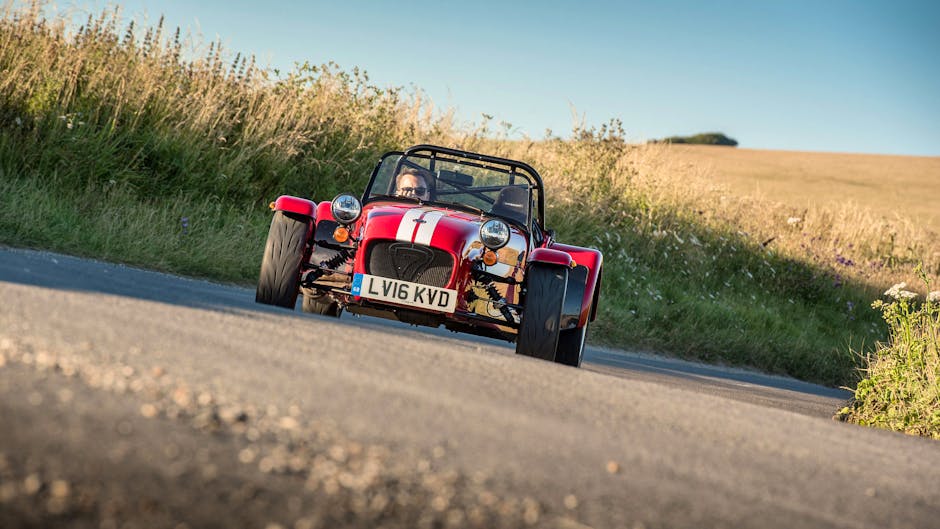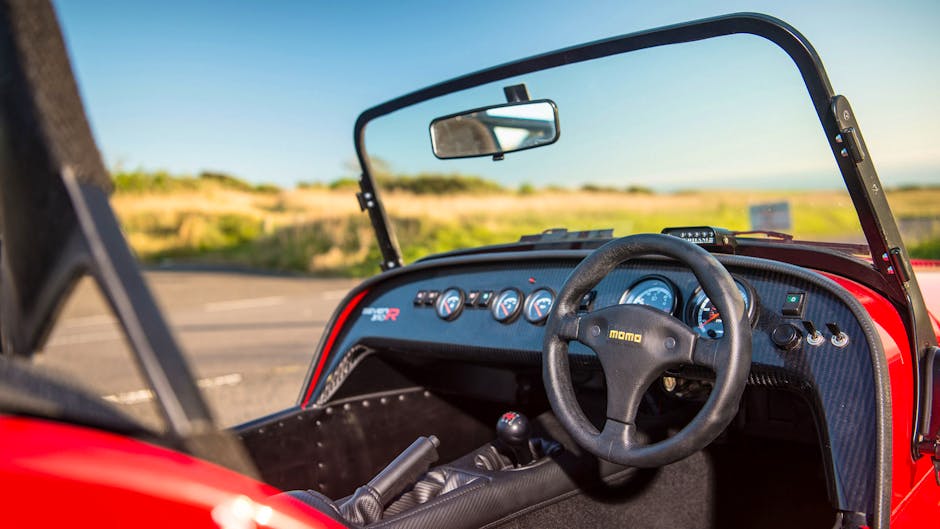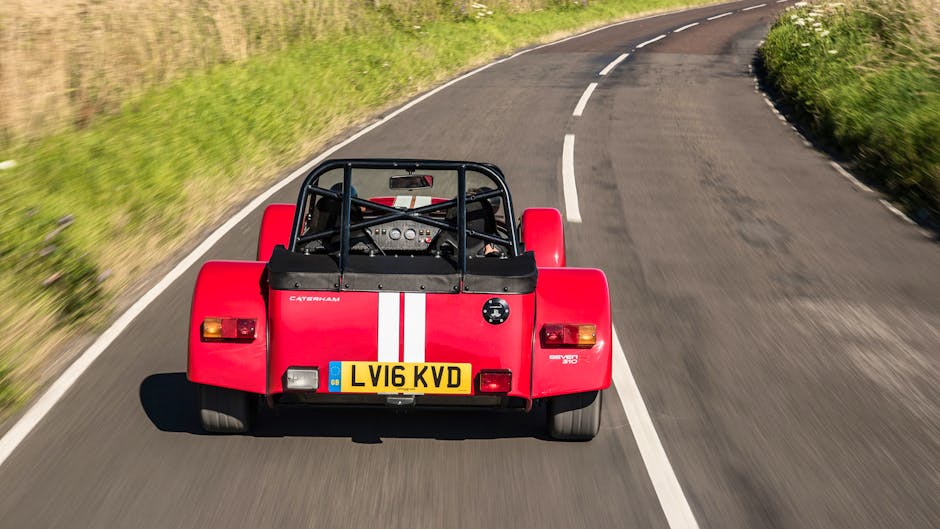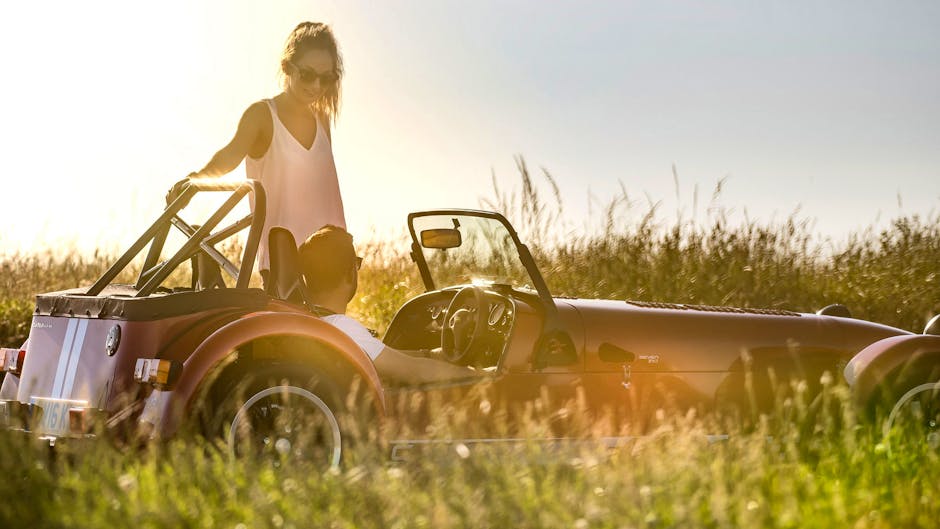Caterham 310R vs 310S: Ben Griffin drove both cars back to back to see just how much more livable the latter really is and which one he would actually buy.
Nobody of sane mind would buy a Caterham for practicality because the boot is smaller than some lunch boxes, nor would they buy one for refinement. Because let’s face it, a car that classes a windscreen as optional has a total disregard for your comfort.
But Caterham asked if I wanted to see just how radically different the 310 can be, depending on whether you stick an ‘R’ at the end, which is built for the track or ‘S’, which presumably stands for ‘softy’ because it is the more road-friendly variant.
Obviously I said yes, so having waved goodbye ─ there were tears ─ to the little black Caterham 310R and its yellow stripe, I said hello to a bright orange 310S replacement. It is as if Caterham knew my penchant for loud colours.
Caterham 310S vs 310R: What is the difference?

At first glance, it seems as if very little is different. Both cars look incredibly cute, both are difficult to get into when the fabric roof is protecting you from the heavens and, truth be told, it would take the eyes of a hawk to tell them apart from a distance.
At this point, upon getting in, do the revisions make themselves known though not too loudly. Gone is the four-point harness for nailing you to the seat, instead there is a standard seatbelt that is a thousand times easier to put on (and a thousand times harder to accidentally sit on).
The tiny Momo steering wheel remains in place, which is good from a driving perspective. The downside is that it is fixed, which means working out how to get your leg under it, whereas in the 310R you can use the quick release and slide it back after entry.
This is perhaps the only time the 310S proves more difficult than its race-inspired 310R sibling. Because elsewhere the extras you get from ticking the ‘S’ box on a standard 310 prove useful. Carpet, for instance, softens the cabin somewhat (and not just figuratively).
You also get a different key, which looks much nicer (not that it matters when being used), a heater to keep your limbs from freezing and snapping in the winter months, black leather seats for added comfort and a 12v socket for charging things.
More important, though, is the full windscreen, hood and side screens. I had this on the 310R press car, so the difference here is non-existent, but I would say the weather pack is an essential extra except if you only race abroad or enjoy picking bits of twig and insects out of your hair.
Last, but by no means least, is the SV wide body chassis, which puts your passenger a little further away, so you no longer feel like you are sitting on their lap. It also makes the pedals a lot easier to press, although this could just be down to being used to the 310R.
Caterham 310S vs 310R: What about the handling?

Once moving, you would have to have mash potato feet to miss how different each car feels and drives. Though still noisy (the exhaust is about 25mm away from the driver’s face), the lack of a differential in the 310S ensures a vastly quieter ride. Less fog horn, more klaxon.
The 310S is vastly more forgiving, too, but it can and still will shake you to bits if the road has been particularly neglected. Though less effective on a track and partly responsible for the 310S feeling less honed, those Bilstein road dampers are more pleasant than the 310R’s sport equivalents.
For a road trip, then, the 310S is preferable. Changing gear is much easier, going fast is less intimidating and hitting a pot hole mid-corner is less spine-crunching. If a more relaxed Caterham appeals, the ‘S’ box is worth ticking.
This is especially true because the 310S and 310R (and the standard 310, too) use the same Ford Sigma 1.6-litre four-cylinder petrol, which is good for 152bhp at 7,000rpm and 168Nm of torque at 5,600rpm.
Really, the only difference is that the 310R loses 1mph on its top speed, to 126mph, while the Caterham 310S takes one tenth of a second longer from 0-62mph, at 4.9 seconds. Neither really matters.
You still get the same 250bhp per tonne power-to-weight ratio, too, owing to the same weight of 540kg. Three times less than a Ford Focus RS, basically.
Caterham 310S vs 310R: Easy decision, then?

But there is a problem. You see, the ‘R’ badge, though likely to infuriate you from time to time, is a more memorable car. Everything is more frenetic and immediate and sharp and explosive, which means on a bad day it is awful but on a good day it will make you smile more than if you won the national lottery. Twice in a row.
Not that the 310S is much less sharp. The inputs are still almost telepathic and its ability to get round corners ridiculously efficient. Compared with your average ‘sporty’ car, it is still positively unhinged. It is just dialled back to more palatable levels.
To me though, I would buy a Caterham because I want a mini race car. I want to fear it and find it captivating in equal measure, to be drawn in by its uncompromising charms and pushed away by its intent on giving me a long-term spinal injury. I want it to make my daily driver seem so bland and numb it may as well be a Vauxhall Vectra.
There are some negatives common to both models, it must be said, mainly that getting the back end to act out takes serious effort. More than you should put in on a public road. And that it is, sadly, way too easy to bump up the price considerably above the £23,495 price of the bog-standard 310 kit (it costs £2,500 extra if you want it built for you).
The 310S, as good as it is (not to mention cheaper), will appeal to someone who is happy taking it a bit steadier even though it is still a fast car. It is for the person who cares less about setting a fast lap time and more about making a Sunday drive to a picturesque pub in the country special.
Because ultimately any Caterham will receive huge amounts of positive attention (particularly in orange, it seems) and it will probably lose zero money if you look after it. You will have bags of fun, too, and it will enrich your motoring lifestyle no end.
Caterham 310S vs 310R: So which one is the winner?

To be honest, the Caterham 310 really is a sweet spot in the range. Fast enough to excite, but without being as much of a handful as the heavier 2.0-litre alternatives, it is an exceptionally well-balanced offering.
For me though, if I wanted to pootle along we would be happy in the plucky Seven 160. But for bringing a road to life, that capital ‘R’ is the way to go ─ and one that would probably end up killing me. But then what a way to go, eh?
Leave a Reply